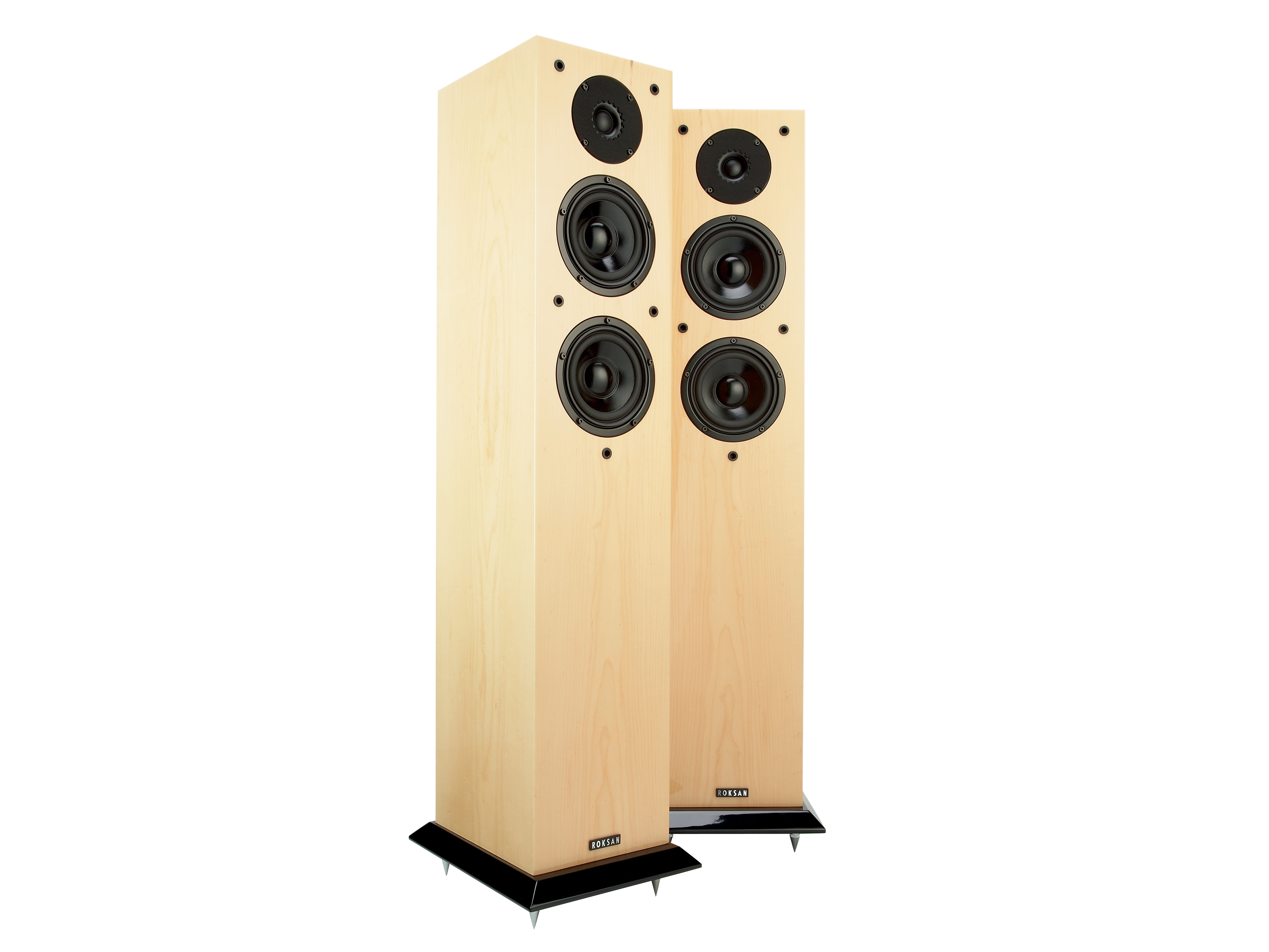TechRadar Verdict
Beautifully presented and solidly built with a fine open lively neutrality, but some lack of warmth
Pros
- +
Exceptionally open and lively
Solidly built
Cons
- -
Tonal balance could have more warmth
Why you can trust TechRadar
Roksan has a track record of coming up with some unusually interesting designs in most product categories.
Loudspeakers like the Darius and Ojan have featured squat enclosures and complex mechanically decoupled tweeter arrangements, but curious shapes rarely enjoy significant commercial success, so the fact that this comparative newcomer looks altogether more conventional is maybe no surprise.
Priced from £2,000 per pair, the Caspian FR5 speaker is a tall, handsome floorstander with a high-gloss piano lacquer finish, either in black at the standard price, or in a subdued bird's-eye maple for an extra £250. It comes pre-fitted with an attractively shaped, gloss black plinth that provides a neat aesthetic touch, and also ensures fine physical stability.
The whole thing feels exceptionally solid, and this is reflected in a very substantial total weight of 35kg, largely down to hefty 25mm MDF construction, while three internal braces add stiffness. The long and rather pretentious chrome spikes have thumbwheel lock-nuts that are tricky to tighten properly, though this is due to be changed.
The three flush-mounted drivers comprise a 25mm soft fabric dome tweeter, plus two relatively small bass/mid drivers, each with 90mm doped paper cones and 130mm pressed steel frames.
The latter operate in parallel right up to the crossover point, so the operating configuration here is actually a straight two-way. All three drive units are magnetically shielded. The tweeter has a short horn flare and is surrounded by a thin foam gasket with serrated inner edge.
The capacious 28.5 litre enclosure is reflex-loaded by a similarly generous rear port, tuned to a low 30Hz. Twin terminal pairs allow bi-wiring or bi-amping, and the crossover uses low impedance, air-cored chokes and tight tolerance polyester capacitors.
Although the manual suggests that these speakers can be located close to a wall, under our conditions, the low bass tended to sound too strong and somewhat detached. It's always advisable to experiment, and in our room the FR5 seems much happier when kept well clear of boundary walls.
One can be forgiven for anticipating modest bass output from a speaker with two smallish drive units, so it came as quite a surprise to find that the Roksan delivers a generous and full scale sound, clearly indicating that the enclosure/port combination, tuned here to a relatively low 30Hz, is making a substantial contribution to the whole.
Alongside the big and substantial bottom end, comes a notably clean and open-sounding midband. There's no tendency for voices to sound 'shut in' here, yet the system can be also be driven hard and loud without any obvious aggression - a rare combination indeed.
Against these two very positive attributes must be set just a couple of minor weaknesses. First, there's some loss of energy in the zone between maximum port output and the point where the two drivers get properly going, so the mid-to-upper bass is lean, and this is responsible for a cool character, and some lack of punch and drive from bass guitar and percussion.
Plus, the small driver area is probably responsible for relatively modest dynamic tension and grip.
The FR5 combines much of the weight and scale of a large loudspeaker with the sort of lively agility found in high-quality small speakers. A very clever design, certainly.
Tech.co.uk was the former name of TechRadar.com. Its staff were at the forefront of the digital publishing revolution, and spearheaded the move to bring consumer technology journalism to its natural home – online. Many of the current TechRadar staff started life a Tech.co.uk staff writer, covering everything from the emerging smartphone market to the evolving market of personal computers. Think of it as the building blocks of the TechRadar you love today.
